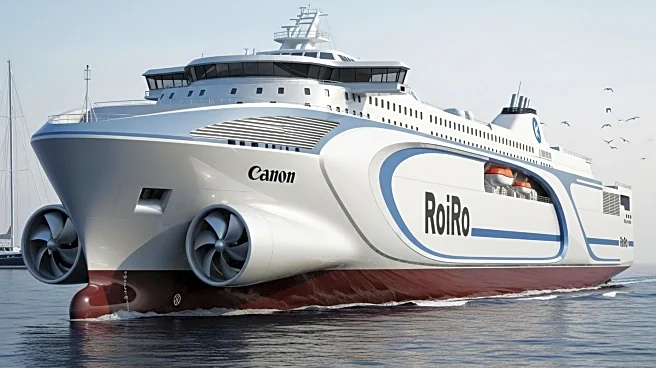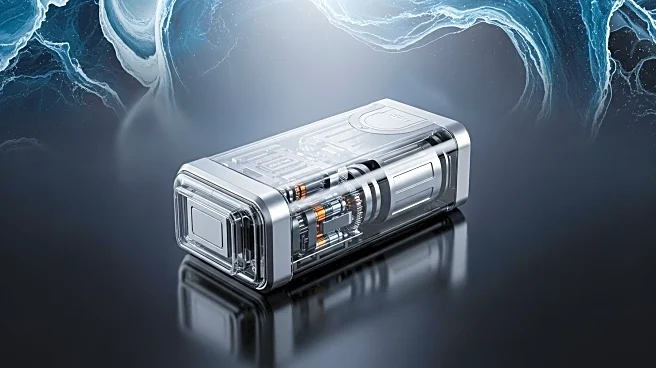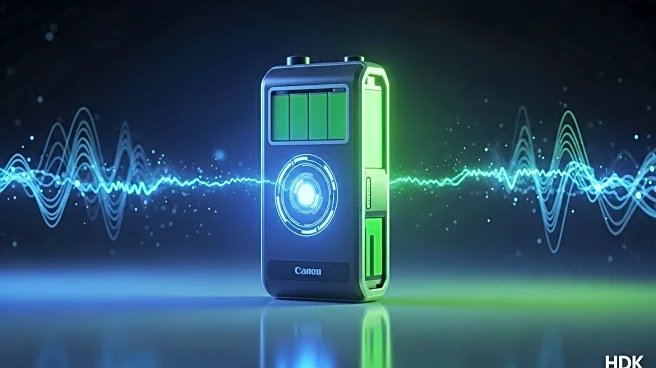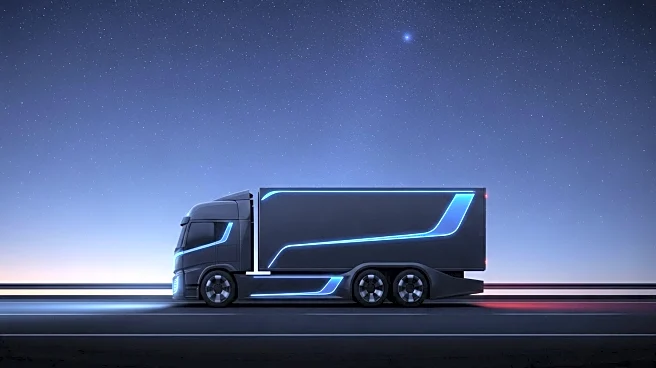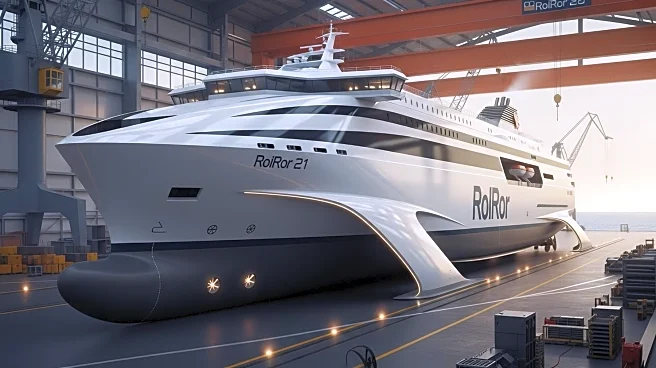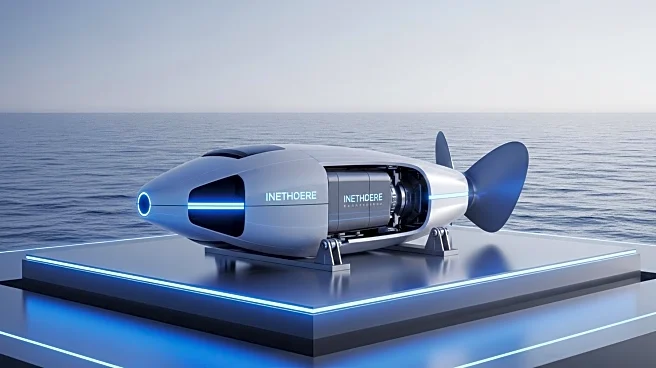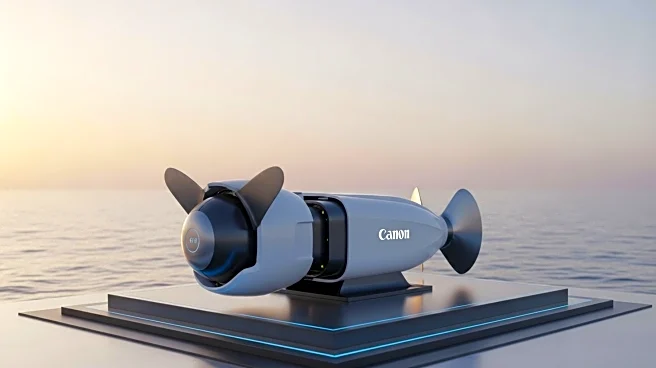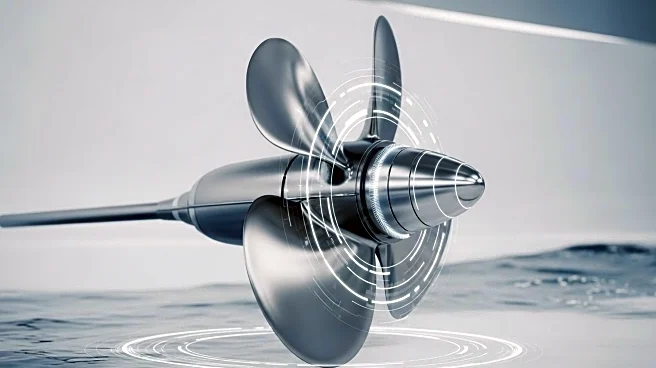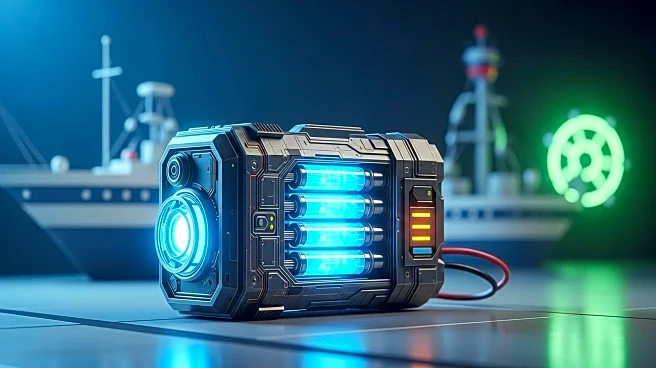What's Happening?
Wallenius Marine and KNUD E. HANSEN have introduced a new roll-on/roll-off (RoRo) ship design at the Donsö Shipping Meet. This design is based on the Sleipner PCTC concept and incorporates operational data from the Sleipner vessels Future Way and Way Forward. The new RoRo design features an engine room located in the bow, which allows for a large cargo capacity of 2,720 lane meters, equivalent to 181 trailers. The design facilitates efficient loading and unloading through the stern ramp and main deck, thanks to the repositioned engine room. Propulsion is provided by a dual-fuel electric powertrain and Azipods, enhancing maneuverability in crowded ports. The concept also supports wing sails, shore power, and alternative fuel sources like batteries and fuel cells, aiming to reduce energy consumption and emissions.
Why It's Important?
The introduction of this innovative RoRo design is significant for the maritime industry as it addresses key challenges related to efficiency and environmental impact. By relocating the engine room to the bow, the design maximizes cargo space and streamlines operations, potentially reducing turnaround times in ports. The use of dual-fuel electric powertrains and Azipods reflects a shift towards more sustainable maritime practices, as these technologies can lower emissions and improve fuel efficiency. The inclusion of alternative energy sources like batteries and fuel cells further underscores the industry's commitment to reducing its carbon footprint. This development could influence future ship designs and operational strategies, promoting greener shipping solutions.
What's Next?
The Sleipner RoRo concept will be officially presented at the Donsö Shipping Meet on September 3, 2025. This event will provide an opportunity for industry stakeholders to explore the design's features and potential applications. As the maritime industry continues to prioritize sustainability, similar innovations are likely to emerge, driving further advancements in ship design and technology. Stakeholders may consider adopting or adapting these concepts to enhance their fleets' efficiency and environmental performance.
Beyond the Headlines
The launch of this RoRo design highlights the growing importance of sustainable practices in the maritime sector. As global regulations on emissions tighten, shipbuilders and operators are increasingly seeking solutions that balance operational efficiency with environmental responsibility. This trend may lead to broader adoption of alternative fuels and propulsion systems, fostering a culture of innovation and collaboration within the industry. Additionally, the focus on reducing emissions aligns with international efforts to combat climate change, positioning the maritime sector as a key player in achieving global sustainability goals.
